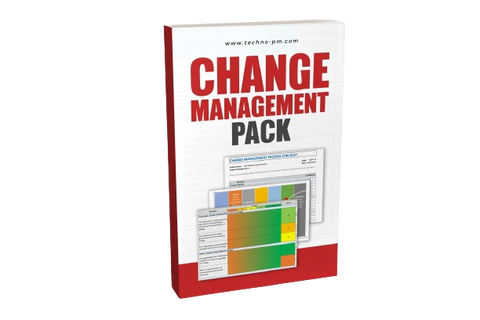A Comprehensive Guide to Modern Change Management Processes
Introduction
Change management is the process of planning, implementing, and guiding individuals, teams, and organizations through a period of transition to achieve a desired future state. It is important because organizations need to adapt and evolve in response to internal and external factors such as market conditions, technological advancements, or organizational restructuring. Change management helps minimize resistance, maximize employee engagement, and ensure successful implementation of changes.
Steps In Change Management Process:
- Identify the need for change: Determine the reasons behind the change and establish a clear vision of the desired outcome.
- Develop a change management plan: Create a comprehensive plan that outlines the objectives, strategies, and resources required to implement the change effectively.
- Identify stakeholders: Identify all individuals or groups affected by the change and analyze their interests, concerns, and potential roles in the change process.
- Communicate the change: Develop a communication plan to inform stakeholders about the change, its rationale, benefits, and potential impacts on individuals and the organization.
- Provide training and support: Offer training programs and support mechanisms to equip employees with the necessary skills and knowledge to adapt to the change.
- Address resistance: Anticipate and address resistance by actively involving employees, addressing concerns, and highlighting the benefits of the change.
- Implement the change: Execute the change plan, monitor progress, and make adjustments as necessary.
- Evaluate and sustain the change: Assess the effectiveness of the change, identify lessons learned, and develop strategies to sustain the new practices or processes.
Identifying Stakeholders and Communicating The Change:
Identifying stakeholders is crucial to change management. Stakeholders include individuals or groups who are directly or indirectly impacted by the change. They may include employees, managers, customers, suppliers, and shareholders. Effective communication is essential to engage stakeholders and gain their support. Clear, timely, and transparent communication about the change's purpose, benefits, and potential impacts is necessary. Different communication channels, such as town hall meetings, emails, workshops, and one-on-one discussions, can be used to ensure effective communication with stakeholders.
Resistance To Change and How To Address It:
Resistance to change is a common challenge in change management. It can arise due to fear of the unknown, loss of control, perceived negative impacts, or lack of understanding. To address resistance:
- Communicate early and frequently: Provide information about the change, its rationale, and benefits to address misconceptions and build trust.
- Involve employees: Involve employees in the change process by seeking their input, addressing concerns, and making them feel heard and valued.
- Provide support and training: Offer training and support to help employees develop the necessary skills and confidence to adapt to the change.
- Address individual concerns: Address individual concerns through open dialogue, coaching, or counselling if necessary.
- Highlight the benefits: Communicate the positive outcomes and benefits that the change will bring to motivate employees and overcome resistance.
Implementation and Monitoring of Change Process
During implementation, it is important to:
- Monitor progress: Regularly track the implementation progress, identify any deviations, and take corrective actions.
- Engage and empower employees: Involve employees in the implementation process, delegate responsibilities, and empower them to contribute to the change.
- Manage risks: Identify potential risks and develop contingency plans to mitigate them.
- Celebrate milestones: Recognize and celebrate achievements and milestones to maintain motivation and momentum.
Evaluating The Success of Change Management Process:
To evaluate the success of the change management process, consider:
- Defined objectives: Assess if the change achieved its intended goals and objectives.
- Employee feedback: Collect feedback from employees to understand their perceptions of the change and its effectiveness.
- Key performance indicators: Measure relevant metrics or key performance indicators (KPIs) to gauge the impact of the change on productivity, customer satisfaction, or other relevant areas.
- Lessons learned: Identify and document lessons learned to inform future change initiatives.

Conclusion
Effective change management involves a structured approach that addresses the human aspects of change. Key factors for success include clear communication, stakeholder engagement, addressing resistance, providing support and training, monitoring progress, and evaluating outcomes. Change is a continuous process, and organizations that embrace change management as a strategic capability are better equipped to adapt, innovate, and thrive in dynamic environments.






